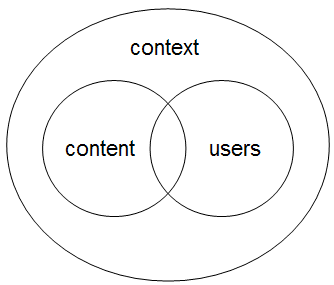- paper, microfilm or electronic
- documents or files, maps, plans, drawings, photographs etc.
- data from business systems, word processed documents, spreadsheets, electronic mail messages, digital images
- audio or video
- handwritten documents
- loosely structured records such as correspondence or highly structured records such as forms" (Kennedy & Schauder 1998, p.5,6).
"Records can be categorised in a number of different ways. Commonly recognised categories include:
- Administrative records - procedures documentation, forms and correspondence. Eg. staff manuals, rosters, logging of property maintenance jobs etc.
- Accounting records - reports, forms and related customer billing records
- Project records - correspondence, notes, project development documentation
- Case files - client records, personnel records, insurance, contacts etc" (Kennedy & Schauder 1998, p.6).
CONTEXT
"Context is any information that can be used to characterize the situation of an entity. An entity is a person, place, or object that is considered relevant to the interaction between a user and an application, including the user and applications themselves" (Dey 2001 p.3).
"Context is the environment or situation" (Dey 2001 p.3).
"Adam Schilit claims that the important aspects of context are: where you are, who you are with, and what resources are nearby" (Dey 2001 p.3).
"J. Pascoe defines context to be the subset of physical and conceptual states of interest to a particular entity" (Dey 2001 p.3).
"Context is all about the whole situation relevant to an application and its set of users. We cannot enumerate which aspects of all situations are important, as this will change from situation to situation" (Dey 2001 p.3).
"If a piece of information can be used to characterize the situation of a participant in an interaction, then that information is context" (Dey 2001 p.4).
Reference
Dey, A.K 2001, 'Understand and Using Context', Personal and Ubiquitous Computing, vol. 5, no. 1, February, pp.4-7.



No comments:
Post a Comment